
When it comes to gaming audio, most people are content to either run a gaming headset through their motherboard's in-built DAC, or use the headset's own DAC if it connects via USB. Sennheiser is looking to change that with its GSX series of dedicated gaming amplifiers. We have already looked at the GSX 1000, and it walked away with our ‘worth buying' award. Today we look at the GSX 1200 Pro – specifically designed for competitive eSports gamers.
What sets the Sennheiser GSX 1200 Pro apart from the GSX 1000 that we reviewed in February, is its integrated chat link. This essentially means you can connect up to 8 separate GSX 1200 Pros together for hardwired communication with your teammates – removing the need for Discord or other live-chat programmes. At £219.95, the GSX 1200 Pro is only £20 more than its smaller brother, but it is still a lot of money. Is this cash worth spending? Let's find out.
General specification
- USB standard: USB 2.0 full speed & USB audio 1.0
- Total harmonic distortion: 0.005 % THD @ -3dBFS
- Cable length: USB cable 1.2 m, chat cable 2.0 m
- Connector plugs: mini-USB socket, 3.5 mm headset socket, 3.5 mm microphone socket, 3.5 mm loudspeaker socket, 2.5 mm chat interface socket A, 2.5 mm chat interface socket B
- Compatibility: PC & Mac
- Warranty: 2 years
Audio outputs
- Headphones DC coupled & dual rail power supply
- Frequency response: 0 – 48.0 kHz
- Recommended headphone: 16 – 150 O impedance
- Max. output voltage 1 V RMS @ 32 O
Supported sample rates
- Main Audio 7.1: 44.1 kHz @ 16 bit
- 7.1: 48.0 kHz @ 16 bit
- 2.0: 44.1 kHz @ 16 bit
- 2.0: 48.0 kHz @ 16 bit
- Main Audio HD 2.0: 96.0 kHz @ 24 bit
- Communication Audio 1.0: 16.0 kHz @ 16 bit
The Sennheiser GSX 1200 Pro ships in a clean white box with a blue strip running across the bottom. A large photo of the amp itself is positioned on the front.
Inside, there are two small booklets (one safety guide and one quick-start guide) as well as two cables. The red cable is a USB cable which plugs into your PC – this is how data is sent to the amp. The black cable is a 2m ‘chat' cable, which uses 2.5mm jacks to connect to another GSX 1200 Pro to allow for the hardwired communication.
The amplifier itself is a relatively small square box, and it is almost identical to the GSX 1000. I say ‘almost identical' as there are a couple of key differences, but we'll get to those in a minute.
For those of you who are unfamiliar with the GSX range, the metallic silver ring that surrounds the middle of the amplifier is actually a dedicated volume wheel – this makes it very easy to quickly adjust the volume of your audio without faffing about in Windows or using a keyboard shortcut.
That glossy section in the middle, which the volume wheel is surrounding, is the central screen and it is touch-enabled. Various options pop up here, though we look at that on the next page.
Now, turning to the right-hand side and left-hand side of the device, we see the first difference between the GSX 1000 and the GSX 1200 Pro. Essentially, on either side of the amp are two smaller volume wheels, the one on the left is labelled ‘out', while the on the right is labelled ‘in'.
Essentially, these are the volume adjusters for chat link – the hardwired communication that is possible when two or more (up to 8 in total) GSX 1200 Pros are linked together. The ‘out' wheel adjusts the amount of volume you are sending to the connected amp, while the ‘in' wheel adjusts the amount of volume you are receiving.
At the back of the device we have all of the inputs. On either side are two 2.5mm jacks labelled ‘A' and ‘B' – these are for connecting multiple GSX 1200's together for chat link. The micro-USB port is for connecting the amp to your PC, and then there are 3x 3.5mm jacks – these are for connecting speakers, a mic and headphones, and each port has a corresponding label.
On the bottom of the amp there is not much to look at, other than one rubber pad which is designed to prevent the GSX 1200 Pro from slipping. There is also a small stand which just raises the amp off the ground slightly, should that be more convenient for you.To test the GSX 1200 Pro, I used it as my primary audio input – meaning I used it with my speakers and headphones to listen to music, watch videos and play games. I also connected a second GSX 1200 Pro to test out chat link, and see if it lives up to its name.
On-screen controls
First, let's assess the on-screen controls of the GSX 1200 Pro. These are identical to the GSX 1000's controls, but it is worth looking at.
Starting with the large number in the middle, this is of course the volume indicator. Turning the metallic wheel adjusts the volume in a quick and easy way, so that is all very straightforward.
Positioned around the volume indicator are 6 smaller symbols, each with their own meaning. Starting with the small headphones symbol (at 11 o'clock), touching this part of the screen will adjust what the amp outputs to – so if you have headphones and speakers connected, like I did, you can easily change the output destination without faffing around in Windows playback devices. It's a very nice touch.
Moving round to the right, the next symbol is EQ. Here there are three different presets – eSports, music or movie, while you can also disable the EQ as well. In practice, the eSports preset drastically reduces the amount of bass, and increases the treble, presumably to allow footsteps to be easily detected. Both movie and music modes sounded quite similar to me, and both just upped the amount of bass. My preference is to stick no with no EQ, but the option is there.
The next symbol, a small person, is for use with the virtual surround-sound, as it slightly alters the direction of the sound – you can choose between having the sound emphasised in front of you or behind you. I preferred to leave this ‘off' as well.
After that, we have the surround-sound switch, and this can only be used with headphones, but it just switches between the 7.1 and 2.0 channels.
Next, we have sidetone – this just gives two options for ‘low' or ‘high' mic sidetone, and this is particularly useful in loud environments as it lets you hear yourself clearly.
Lastly, we have what Sennheiser calls the ‘environment'. Essentially, this controls the amount of reverb applied to the virtual surround-sound, with ‘low', ‘high' or ‘off' settings being on-hand. Sennheiser reckons ‘high' reverb works well for open-world games as it can increase the overall ‘size' of the audio, but my preference was still to leave it off to preserve the most detail.
GSX 1200 Pro in use
Now that we have gone through all of the controls, what is the amp like to use?
I'll start with the virtual surround-sound, as this is perhaps the most impressive aspect of the amp. In short, this is undoubtedly the best implementation of virtual 7.1 I have ever used.
This is because the GSX 1200 Pro is able to enlarge the audio, and create the feeling that the sound is truly coming from all angles, in a very convincing manner – one that feels much more accurate, and also more detailed, than other attempts at virtual surround that I have heard.
Of course, it is still not quite as good as the real deal – for that you will need something like the ASUS ROG Centurion – but for virtual surround, I am very impressed.
Moving on, it is worth touching on the overall quality of the amp and the sound it produces. Here, I used a range of headphones – including the Beyerdynamic DT 990s, Sennheiser HD 598 Cs and Phillips Fidelio X2s – and gaming headsets with the amp to see what the sound is like.
First of all, the sound is much cleaner than when plugged into my motherboard's on-board audio. I would imagine this would be especially apparent for those of you who currently user older motherboards as on-board audio codecs have come a long way. Even with my relatively recent X99 motherboard I still noticed a big reduction in background interference which gives a much cleaner sound.
There are limits, though, and the GSX 1200 Pro should not be considered an audiophile-grade amplifier. For starters, it is recommended to use headphones with impedance of no more than 150 Ohms – so flagships from the likes of Grado or Sennheiser won't sound as good as they should. On-top of that, compared with my Fiio E10K – an entry-level audiophile DAC/amp, I do think that the GSX 1200 Pro does sound slightly more distant overall – not nearly enough to put me off using it, but if I were picking something purely for music/video consumption, I would probably go with the Fiio.
Still, the GSX 1200 is definitely a gaming device, and considering the several good features on offer, I was more than happy to use it for music and gaming – I've already said how much I enjoyed the virtual surround-sound, but even with 7.1 disabled, the amp still gives plenty of volume and detail in-game.
Chat link and mic
Since a big feature of the GSX 1200 Pro is chat link – the ability to talk directly to up to 8 different GSX 1200 Pros – it is only fair to talk about how this works and what it sounds like.
Essentially, all you need to do is connect your GSX 1200 Pros to each other using the included 2m chat link cable (it's a 2.5mm to 2.5mm cable). Each amp has two ports on the back, labelled ‘A' and ‘B'. The cable should go from port A on the first unit, to port B on the second unit. You can continue this for up to 8 units.
This feature is clearly aimed at eSports teams who need to talk to each other in real time, and it seems pretty straightforward. I could only test it out using just two units, but I got a clear audio signal and noticed no discernible lag – a definite benefit of this hardwired solution. Obviously, though, you all need to be within 2m of each other for this to work effectively.
The GSX 1200 Pro also uses an integrated noise-cancelling algorithm which could help teams competing in big and noisy arenas. However, if you are using the amp to game at home – in a relatively quiet environment – it does have the affect of adding a strong twang to the audio. To demonstrate this, take a listen to my recording where I compare the Sennheiser Game Zero's mic when plugged into the GSX 1200 Pro, and when plugged directly into my motherboard:
Game Zero mic comparison using the GSX 1200 Pro vs on-board audio.
As you can tell, the sound is a lot more natural when the headset is plugged into my motherboard – the GSX 1200 Pro makes things sound a bit more robotic and processed. The noise cancelling tech is great for chat link as it means you get less of the background noise and more of your teammate, but it isn't the best for gaming at home.The Sennheiser GSX 1200 Pro is a capable gaming amp, coming in at just under £220.
It is quite similar to its little brother, the GSX 1000, given they both sport excellent virtual surround-sound implementations and the same on-screen controls.
Where the GSX 1200 Pro differs, though, is in its ability to connect to other units for hardwired communication. This would be great for eSports teams competing in busy halls or arenas – everyone has their own amp, they are daisy-chained together and you get a real time audio feed.
If that doesn't interest you, though, there is no reason to spend the extra £20 on the GSX 1200 Pro over the GSX 1000. The reason you would spend that extra money is for that unique ability to connect to multiple devices and get local chatter without the need for Discord or in-game audio comms.
With that in mind, I think the Sennheiser GSX 1200 Pro is definitely worth the extra cost – provided you will use its extra features, an extra £20 seems like a very good deal to me. If you just want a dedicated gaming amp with excellent virtual surround-sound, go for the GSX 1000 instead.
You can buy one from Overclockers UK for £219.95 HERE.
Pros
- Chat links works well.
- Excellent virtual 7.1.
- Neat and easy to use.
- Only an extra £20 over the GSX 1000.
Cons
- £219.95 isn't cheap.
- Noise cancelling technology adds a robotic twang to speech.
KitGuru says: The GSX 1200 Pro is a very good gaming amp. It's chat link feature would be great for eSports teams competing locally, but if you won't use the feature save the cash and get the GSX 1000 instead.
 KitGuru KitGuru.net – Tech News | Hardware News | Hardware Reviews | IOS | Mobile | Gaming | Graphics Cards
KitGuru KitGuru.net – Tech News | Hardware News | Hardware Reviews | IOS | Mobile | Gaming | Graphics Cards


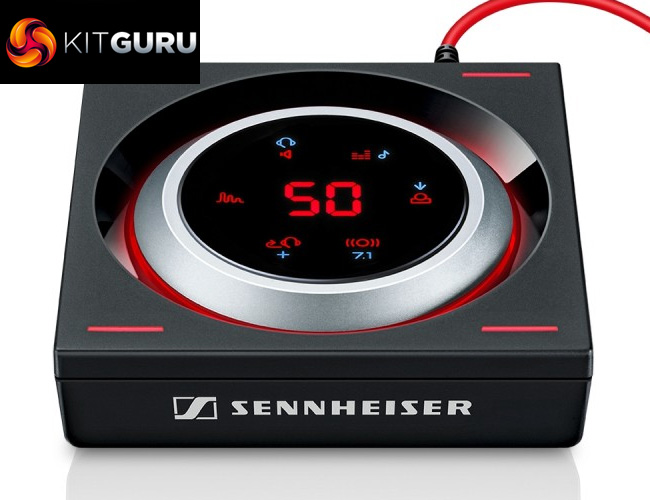

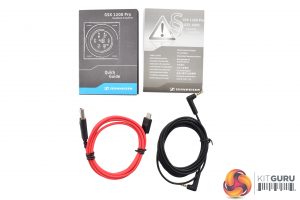
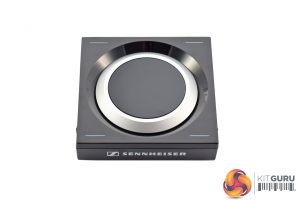


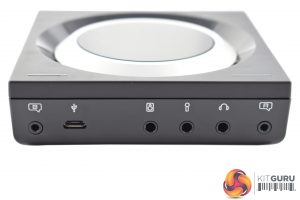


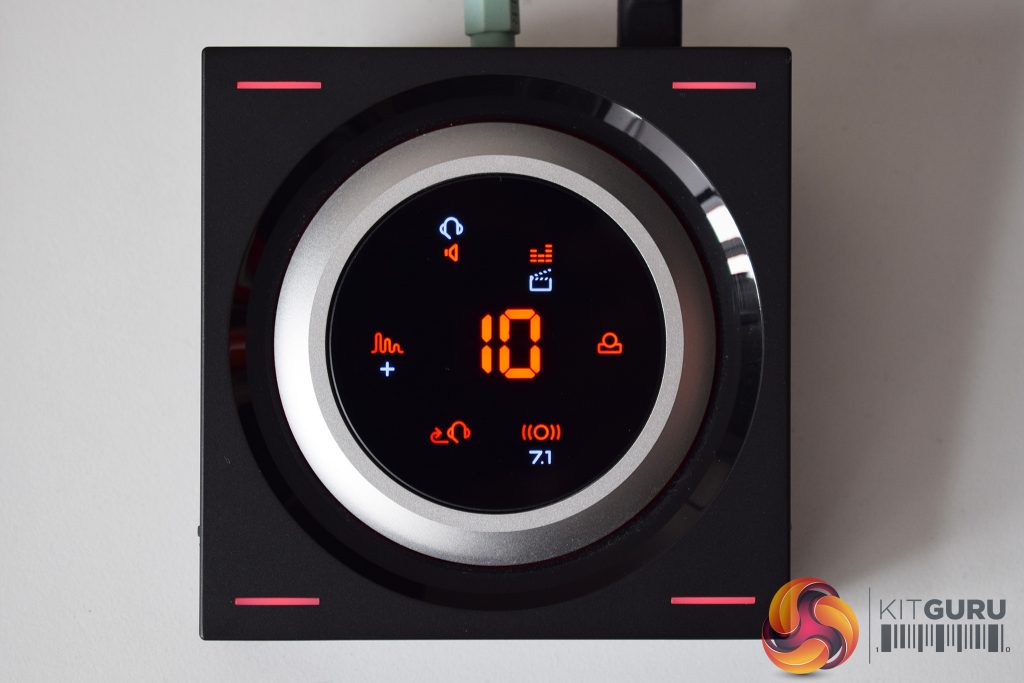
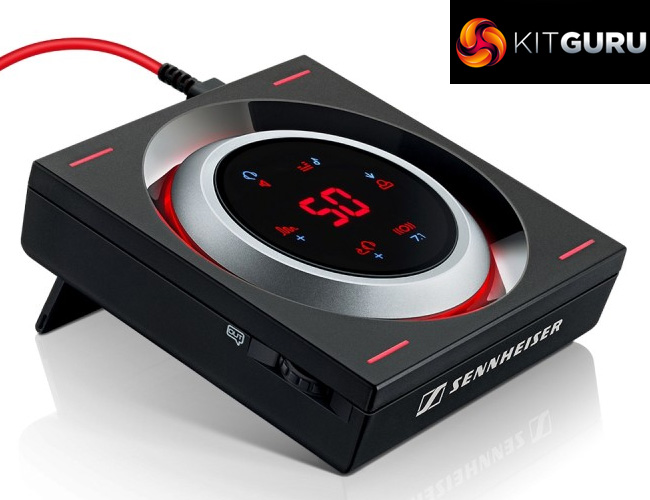



Hello there.
Do you have any idea how our brain perceives audio ques?
I would presume not since you are saying that this is “not a real surround solution” because there’s only one driver on each side – that’s completely and utterly wrong.
1 or 100 drivers a side won’t matter, it’s the algorythm used for calculating the shadow of effect of the head that matters, and the implementation hereof.
This mistakes makes me question the validity of the entire review. Surely a reviewer should know this important detail.